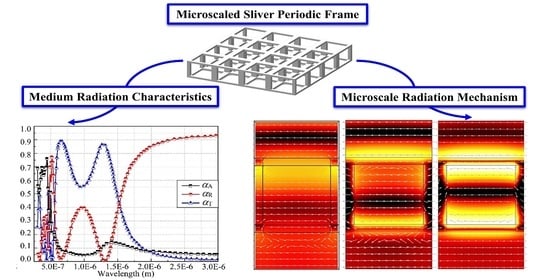The Equivalent Thermal Conductivity of the Micro/Nano Scaled Periodic Cubic Frame Silver and Its Thermal Radiation Mechanism Analysis
Abstract
:1. Introduction
2. Mathematical Methods
2.1. Absorptivity, Reflectivity and Transmissivity
2.2. The Equivalent Thermal Conductivity
3. Physical Model
3.1. Calculation Domain of Infinity Silver Plate
3.2. Computational Domain of the Periodic Cubic Structure
4. Results and Discussion
4.1. The Equivalent Thermal Conductivity
4.2. Absorptivity, Reflectivity and Transmissivity
4.3. Spectral Radiation Properties at the Reflectivity Peak
4.4. Spectral Radiation Properties at the Absorptivity Peak
5. Conclusions
- In the equivalent thermal conductivity of a periodic cubic frame structure, the smaller the cell size of the structure, the larger the proportion of thermal radiation. When the structure size is comparable to the characteristic wavelength, the equivalent radiative thermal conductivity increases sharply.
- Periodic cubic frame sliver has better thermal radiation properties in the near infrared band while fluctuates a lot in the visible band.
- The reflection of the periodic cubic frame sliver enhanced at 680 nm–1.28 μm, with the strongest reflectivity happened at 960 nm wavelength; and the absorption enhanced at a wavelength band of 1 μm–1.7 μm, as the strongest absorption happened when wavelength is 1.425 μm.
- The thermal radiation mechanism of periodic cubic frame structure was explained by the SPP and MPs resonance jointly form a resonance in the near infrared band, while the cavity formed inside the MPs excitation of the absorption peak phenomenon.
Author Contributions
Funding
Institutional Review Board Statement
Informed Consent Statement
Data Availability Statement
Conflicts of Interest
Nomenclature
| A | unit cross-sectional area | m2 |
| A’ | area | m2 |
| a | unit cubic cell length | m |
| B | magnetic flux density | Wb/m2 |
| b | internal cubic pore length | m |
| c | specific heat capacity | (J·kg)/K |
| d | thickness | m |
| D | electric displacement vector | C/m2 |
| E | electric field vector | V/m |
| H | magnetic field vector | A/m |
| h | incident distance | m |
| J | current density | A/m2 |
| k | spectral extinction coefficient | - |
| kB | Boltzmann constant | J/K |
| Me | dimensionless number | - |
| n | refractive index | - |
| n | heat flow vector | |
| N | particle numbers | - |
| r | reflection coefficient | |
| R | internal pore radius | m |
| S | incident energy flow | W |
| T | temperature | K |
| t | time | s |
| t | transmission coefficient | |
| Q | cross-section | m2 |
| q | density of heat source | W/m2 |
| V | volume | m3 |
| W | rate | - |
| x,y,z | coordinate direction | - |
| α | coefficient | - |
| β | coefficient | - |
| δ | grid size | m |
| ρ | volume charge density/density | C/m3 kg/m3 |
| κ | thermal conductivity | W/(m·K) |
| ε | permittivity | F/m |
| ħ | Planck constant divided by 2 π | J·s |
| σSB | Steven-Boltzmann constant | - |
| λ | wavelength | m |
| φ | porosity | - |
| μ | permeability | H/m |
| Subscript | ||
| A | absorption | |
| a | absorption | |
| cond | conduction | |
| e | extinction | |
| p | Pore/ cell size | |
| R | reflection | |
| r | radius direction | |
| rad | thermal radiation | |
| s | scattering | |
| T | transmission | |
| total | total heat transfer | |
| V | volume | |
| w | equivalent wall size | |
| Superscript | ||
| * | complex vector | |
| a | absorption | |
| i | incident | |
| s | scattering | |
References
- Tien, C.L. Microscale Energy Transfer; CRC Press: Boca Raton, FL, USA, 1997. [Google Scholar]
- Cravalho, E.G.; Tien, C.L.; Caren, R.P. Effect of small spacings on radiative transfer between two dielectrics. J. Heat Transf. 1967, 89, 351–358. [Google Scholar] [CrossRef]
- Mulet, J.P.; Joulain, K. Enhanced radiative heat transfer at nanometric distances. Micro. Therm. Eng. 2002, 6, 209–222. [Google Scholar] [CrossRef]
- Bikbaev, R.G.; Vetrov, S.Y.; Timofeev, I.V. Hybrid Tamm and surface plasmon polaritons in resonant photonic structure. J. Quant. Spectrosc. Radiat. Transf. 2020, 253, 107156. [Google Scholar] [CrossRef]
- Nakkach, M.; Duval, A.; Ea-Kim, B.; Moreau, J.; Canva, M. Angulo-spectral surface plasmon resonance imaging of nanofabricated grating surfaces. Opt. Lett. 2010, 35, 2209–2211. [Google Scholar] [CrossRef]
- Ge, C.X.; Wu, Z.S.; Bai, J.; Gong, L. Effect of nanoscale roughness on optical trapping properties of surface plasmon polaritons exerted on nanoparticle. J. Quant. Spectrosc. Radiat. Transf. 2018, 219, 339–349. [Google Scholar] [CrossRef]
- Hafeli, A.K.; Rephaeli, E.; Fan, S.; Cahill, D.G.; Tiwald, T.E. Temperature dependence of surface phonon polaritons from a quartz grating. J. Appl. Phys. 2011, 110, 043517. [Google Scholar] [CrossRef]
- Van Zwol, P.J.; Joulain, K.; Ben-Abdallah, P.; Chevrie, J. Phonon polaritons enhance near-field thermal transfer across the phase transition of VO2. Phys. Rev. B 2011, 84, 161413. [Google Scholar] [CrossRef] [Green Version]
- Painter, O.; Lee, R.K.; Scherer, A.; Yariv, A.; O’Brien, J.D.; Dapkus, P.D.; Kim, I. “Two-dimensional photonic band-gap defect mode laser. Science 1999, 284, 1819–1821. [Google Scholar] [CrossRef] [PubMed] [Green Version]
- Chen, Y.Y.; Liao, H.Y.; Shi, J.L.; Wang, Q. Unusual photon tunneling in the frustrated total internal reflection structure including indefinite metamaterials. J. Opt. 2010, 12, 292–295. [Google Scholar] [CrossRef]
- Lee, B.J.; Wang, L.P.; Zhang, Z.M. Coherent thermal emission by excitation of magnetic polaritons between periodic strips and a metallic film. Opt. Express. 2008, 16, 11328–11336. [Google Scholar] [CrossRef]
- Lee, B.J.; Zhang, Z.M. Coherent thermal emission from modified periodic multilayer structures. J. Heat Transf. 2007, 129, 17–26. [Google Scholar] [CrossRef]
- Wang, A.H.; Hsu, P.F.; Chen, Y.B.; Cai, J.J. Effects of nanoscale features on infrared radiative properties of heavily doped silicon complex gratings. Sci. China Technol. Sci. 2010, 53, 2207–2214. [Google Scholar] [CrossRef]
- Qiu, J. Infrared Radiative Properties of Micro Scale Structures of Near-Surface. Ph.D. Dissertation, Harbin Institute of Technology, Harbin, China, 2012. [Google Scholar]
- Huang, J.G. Research on the Control Methods of Infrared Thermal Radiation Characteristics of Micostructured Surface. Ph.D. Dissertation, Nanjing University of Science and Technology, Nanjing, China, 2015. [Google Scholar]
- Huang, J.G.; Xuan, Y.M.; Li, Q. Narrow-band spectral features of structured silver surface with rectangular resonant cavities. J. Quant. Spectrosc. Radiat. Transf. 2011, 112, 839–846. [Google Scholar] [CrossRef]
- Liu, X.; Xia, H.; Xuan, Y. Effects of near-field photon tunneling on the performance of photon–enhanced thermionic emission energy conversion. J. Quant. Spectrosc. Radiat. Transf. 2019, 222, 223–228. [Google Scholar] [CrossRef]
- Zheng, Z.; Wang, A.; Xuan, Y. Spectral tuning of near-field radiative heat transfer by graphene-covered metasurfaces. J. Quant. Spectrosc. Radiat. Transf. 2018, 208, 86–95. [Google Scholar] [CrossRef]
- Liu, B.; Xia, X.L.; Sun, C.; Chen, X. Analysis on spectral radiative properties of micro-scaled rough ligament surface inside open-cell nickel foam. Int. J. Heat Mass Transf. 2019, 145, 118773. [Google Scholar] [CrossRef]
- Liu, B.; Xia, X.L.; Zhang, X.; Sun, C. Spectral radiative properties of skeleton inner structure of ceramic foam based on ordered opal structure model. J. Quant. Spectrosc. Radiat. Transf. 2019, 224, 279–288. [Google Scholar] [CrossRef]
- Wang, C.H.; Yi, H.L.; Tan, H.P. Discontinuous finite element method for vector radiative transfer. J. Quant Spectrosc. Radiat. Transf. 2017, 189, 383–397. [Google Scholar] [CrossRef]
- Yu, H.; Zhang, H.; Dai, Z.; Xia, X. Design and analysis of low emissivity radiative cooling multilayer films based on effective medium theory. ES Energy Environ. 2019, 6, 69–77. [Google Scholar] [CrossRef]
- Wang, C.H.; Qu, L.; Zhang, Y.; Yi, H.L. Three-dimensional polarized radiative transfer simulation using discontinuous finite element method. J. Quant. Spectrosc. Radiat. Transf. 2018, 208, 108–124. [Google Scholar] [CrossRef]
- Zhang, Z.M. Nano/Microscale Heat Transfer; McGraw-Hill: New York, NY, USA, 2007. [Google Scholar]
- Bohren, C.F.; Huffman, D.R. Absorption and Scattering of Light by Small Particles; John Wiley & Sons: Weinheim, Germany, 2008. [Google Scholar]
- Rui, X.; Wang, G.; Zhang, J. Transfer Matrix Method for Multibody Systems: Theory and Applications; John Wiley & Sons: Hoboken, NJ, USA, 2018. [Google Scholar]
- Yu, H.; Zhang, H.; Xia, X. A fractal-skeleton model of high porosity macroporous aluminum and its heat transfer characterizes. J. Therm. Anal. Calorim. 2020, 1, 1–10. [Google Scholar] [CrossRef]
- Yu, H.; Zhang, H.; Buahom, P.; Liu, J.; Xia, X.; Park, C.B. Prediction of thermal conductivity of micro/nano porous dielectric materials: Theoretical model and impact factors. Energy 2021, 121140. [Google Scholar] [CrossRef]
- Huang, H.C.; Usmani, A.S. Finite Element Analysis for Heat Transfer: Theory and Software; Springer Science & Business Media: Berlin, Germany, 2012. [Google Scholar]
- Young, D.H. University Physics, 7th ed.; Addison Wesley: Boston, MA, USA, 1992. [Google Scholar]
- Yang, H.U.; D’Archangel, J.; Sundheimer, M.L.; Tucker, E.; Boreman, G.D.; Raschke, M.B. Optical dielectric function of silver. Phys. Rev. B 2015, 91, 235137. [Google Scholar] [CrossRef] [Green Version]

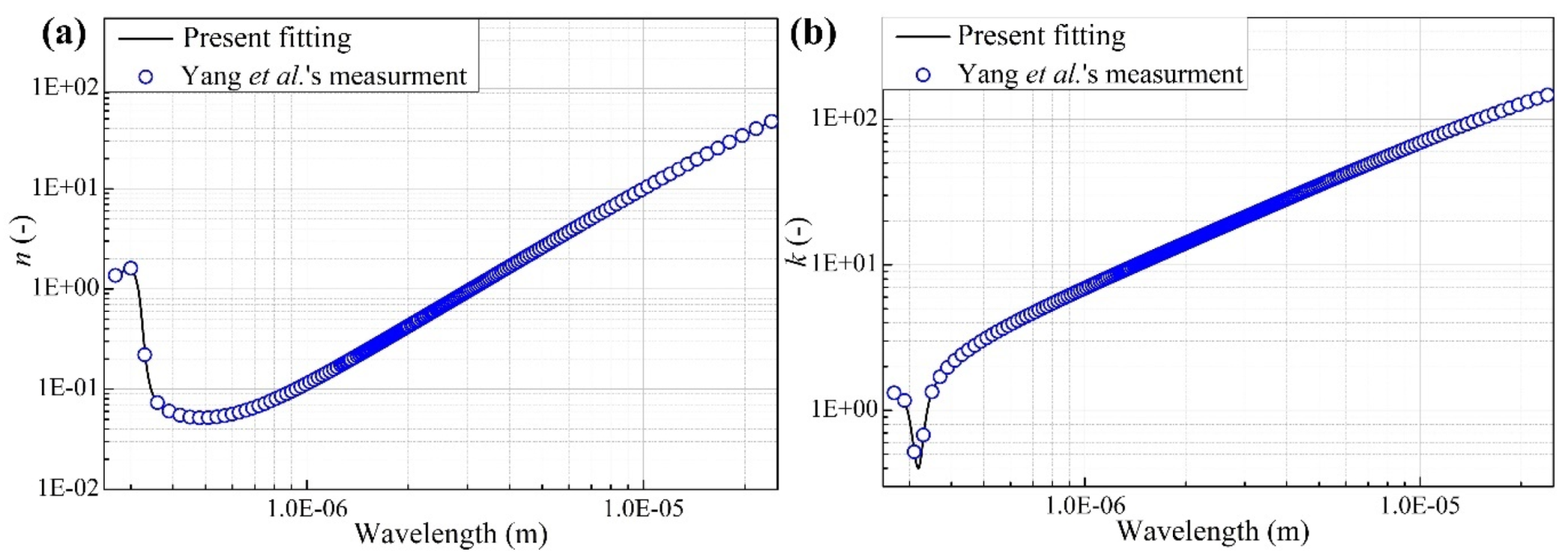
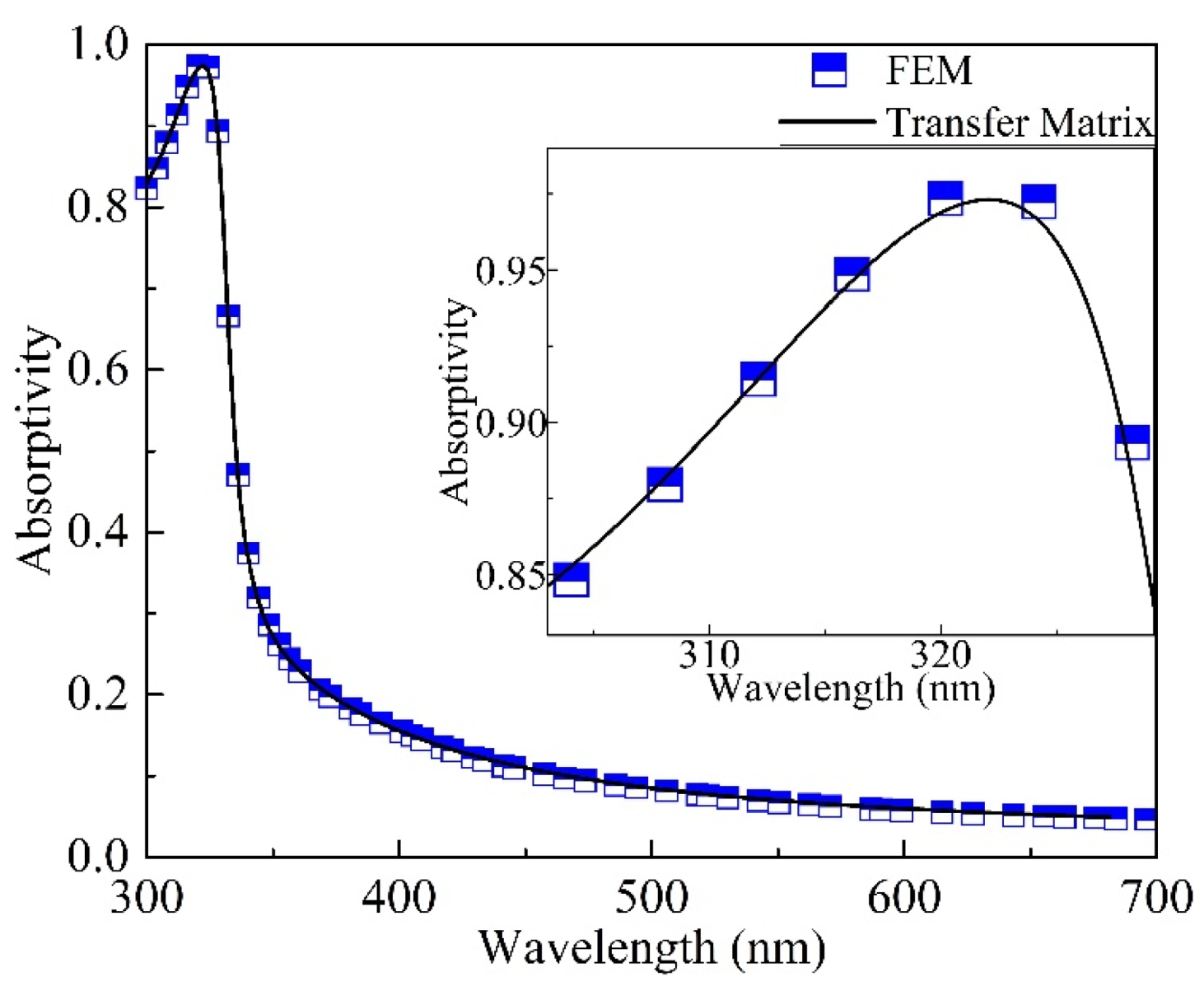
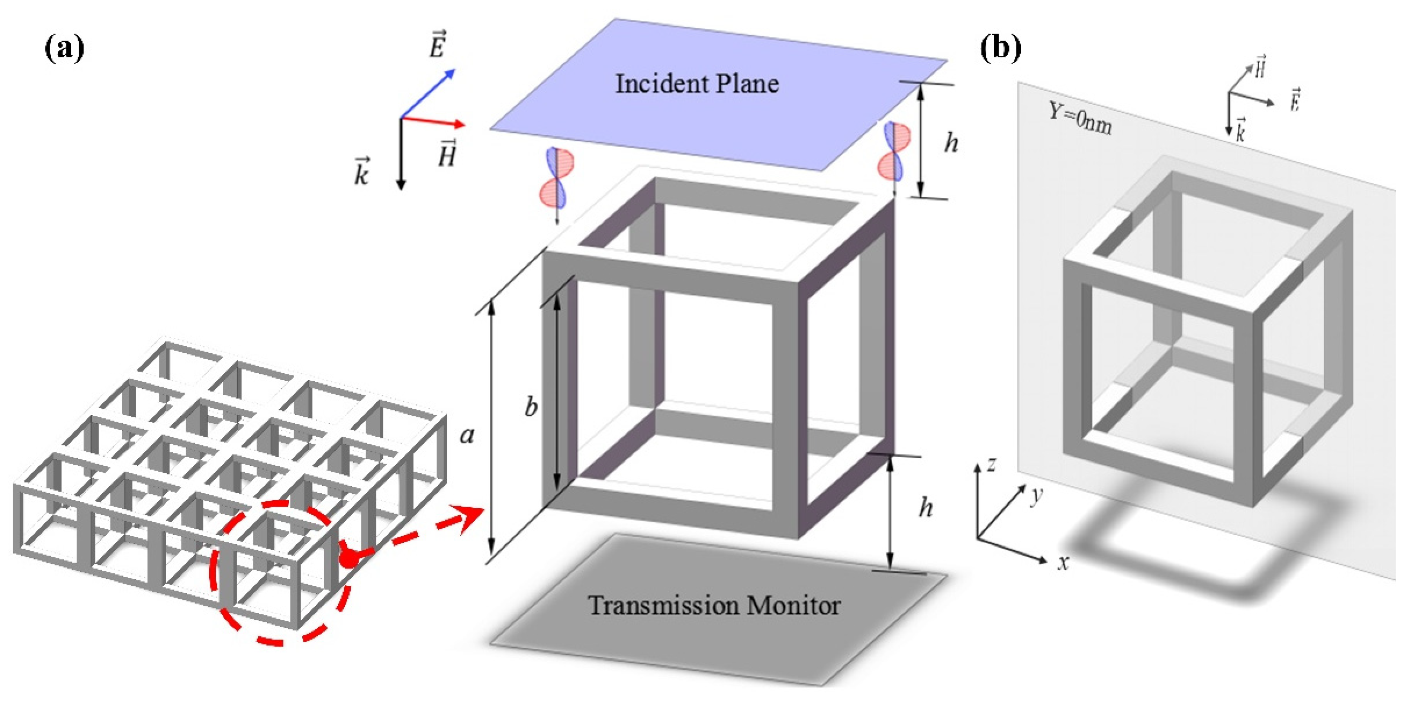
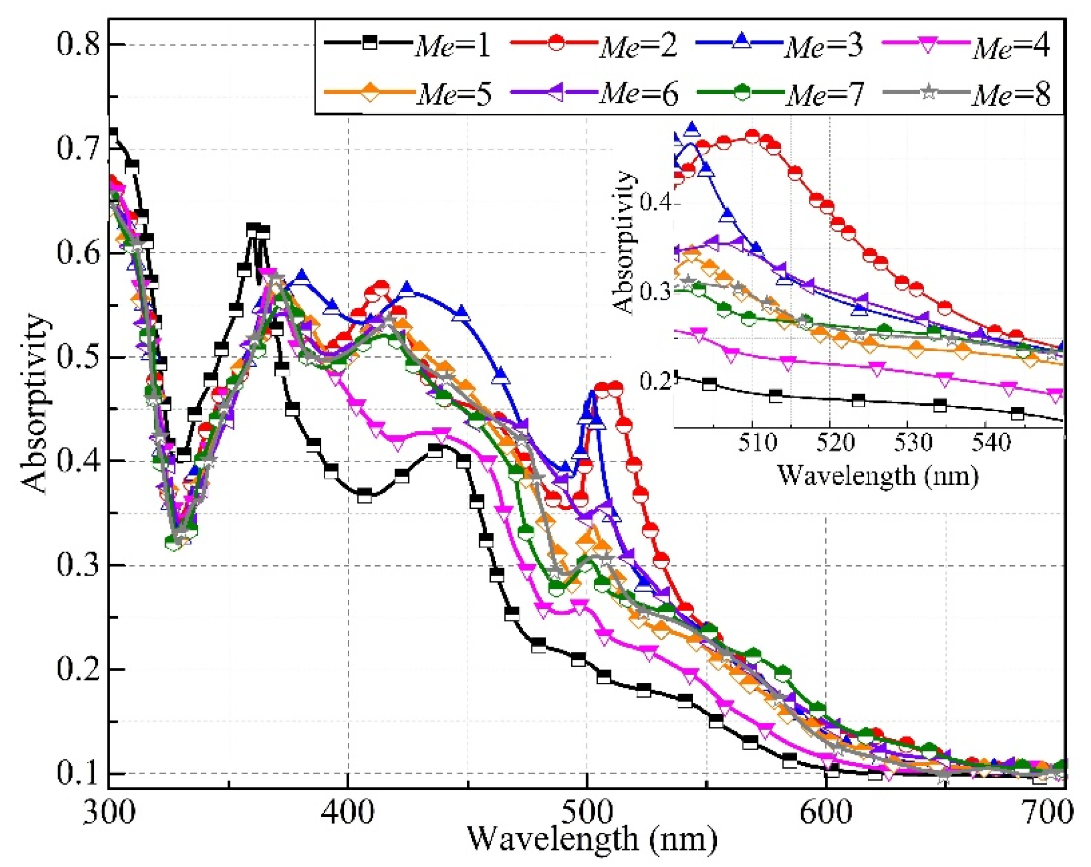



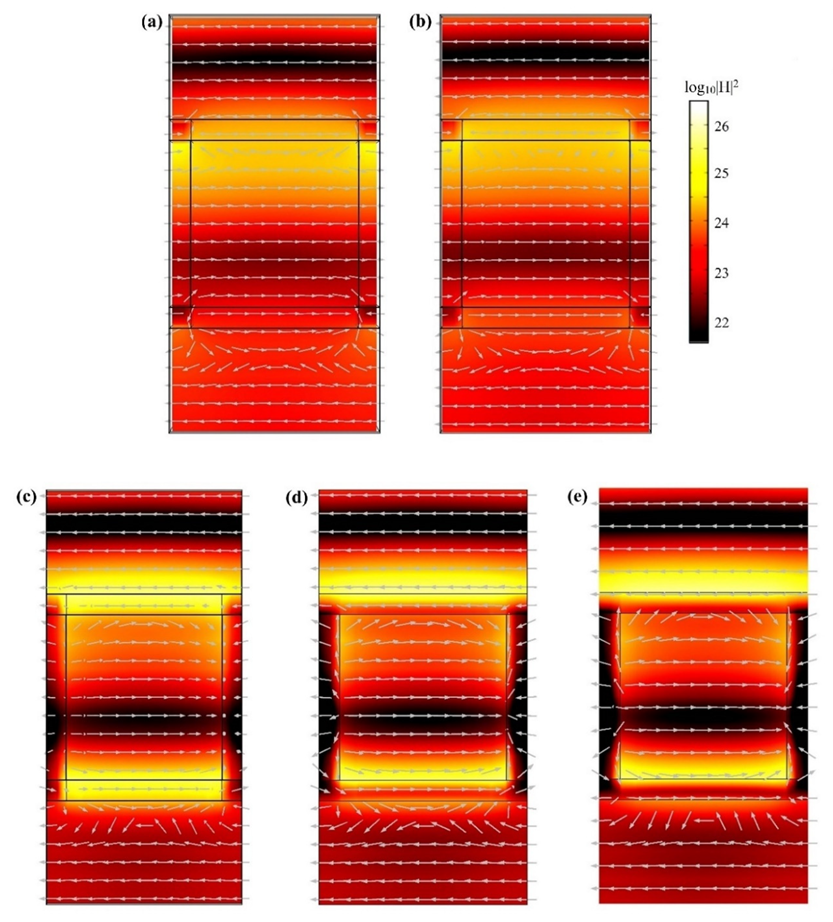

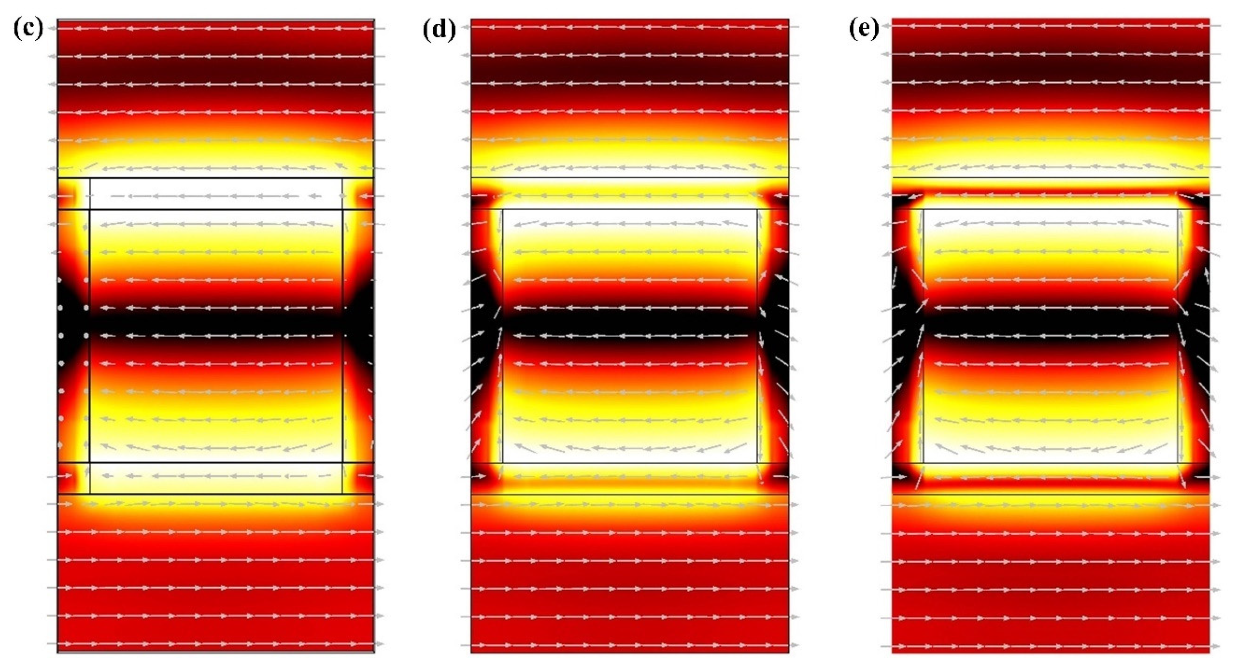
Publisher’s Note: MDPI stays neutral with regard to jurisdictional claims in published maps and institutional affiliations. |
© 2021 by the authors. Licensee MDPI, Basel, Switzerland. This article is an open access article distributed under the terms and conditions of the Creative Commons Attribution (CC BY) license (https://creativecommons.org/licenses/by/4.0/).
Share and Cite
Yu, H.; Zhang, H.; Wang, H.; Zhang, D. The Equivalent Thermal Conductivity of the Micro/Nano Scaled Periodic Cubic Frame Silver and Its Thermal Radiation Mechanism Analysis. Energies 2021, 14, 4158. https://doi.org/10.3390/en14144158
Yu H, Zhang H, Wang H, Zhang D. The Equivalent Thermal Conductivity of the Micro/Nano Scaled Periodic Cubic Frame Silver and Its Thermal Radiation Mechanism Analysis. Energies. 2021; 14(14):4158. https://doi.org/10.3390/en14144158
Chicago/Turabian StyleYu, Haiyan, Haochun Zhang, Heming Wang, and Dong Zhang. 2021. "The Equivalent Thermal Conductivity of the Micro/Nano Scaled Periodic Cubic Frame Silver and Its Thermal Radiation Mechanism Analysis" Energies 14, no. 14: 4158. https://doi.org/10.3390/en14144158
APA StyleYu, H., Zhang, H., Wang, H., & Zhang, D. (2021). The Equivalent Thermal Conductivity of the Micro/Nano Scaled Periodic Cubic Frame Silver and Its Thermal Radiation Mechanism Analysis. Energies, 14(14), 4158. https://doi.org/10.3390/en14144158






